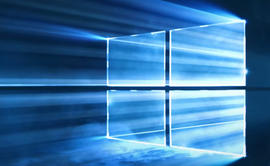As you may have heard by now, Microsoft has terminated the sales of Windows XP (through most methods) and your only Windows desktop option is now Windows Vista. Vista has been out for more than a year, but (other than for new home computers) hasn’t been widely accepted by the marketplace – especially by business customers. Why? There are two primary reasons.
Reason One: Vista requires significantly more processor horsepower and memory to operate (in the “normal” mode with the jazzy graphics). Many people have older computers with two or three year old CPUs that don’t really have the horsepower that is a good fit for Vista. So for those computers, it makes sense to keep XP until the hardware needs replacing, but in most cases the machine (with XP) is just fine for what people need it for, so no upgrades here.
Reason Two: Vista in some cases uses a completely different programming model than did XP. So in a lot of cases, software that ran fine on XP is broken on Vista. Microsoft claims that the new model was implemented in the interest of security (and it probably was, since XP was VERY insecure to start with). But with Service Pack 2 and the hotfix updates (and a decent IT staff), most XP desktops are reasonably secure for most business purposes. Many businesses don’t want to risk having something critical break, just for the sake of the upgrade.
Many people in IT circles have hoped (and even petitioned) for Microsoft to keep selling XP, and they did extend sales for a few months (Microsoft typically sells the old OS for up to 24 months after the introduction of the new version). But we’re only at Vista + 18 months. Another truism: Only adopt the latest Microsoft product after the first “Service Pack” is issued (assumingly to fix all the major bugs that weren’t caught prior to the release). So Microsoft rushed Vista Service Pack 1 to the masses in hopes of adoption after that milestone. However, with the monthly “patch tuesday” updates, the SP1 is really a moot exercise (since most, if not all, of the updates in SP1 had already been pushed as part of the monthlies.
The real reason to stop selling XP: Money (I know you’re shocked!). Most people are just fine with XP, and most PCs sold in the last 2-3 years (with XP) have far more capabilities that are needed by 99% of the working public. XP works just fine, and it’s (reasonably) secure for most purposes. Moreover, it’s like an old friend – familiar and convenient. We know how to make it work and find things. We’re productive on it.
Microsoft (in a fit of Apple-related paranoia), had to “improve” the user interface of Vista – make it pretty, shiny and flashy – the “ohhh, ahhh” factor. The problem is that scares off lots of marginally computer-literate people. If Microsoft had just re-engineered under the hood (for security) and left the user interface the same, then it might have been a great product. But the problem is that people wouldn’t have “seen” any changes to identify as “Vista”. The best alternative (for the users) would have been a “XP Service Pack 4” that fixed several things under the hood, but left the UI alone. Unfortunately, Microsoft couldn’t charge for that, since they have set the precedent that Service Packs are free. No more money for Microsoft.
So we’re collectively stuck with an upgrade that we didn’t really ask for, we don’t really need, and we don’t want – just for the sake of Microsoft product cycle revenues. If you need a new computer, Vista will work just fine, but you’ll be spending more that you really need for processor and memory (did I mention that the PC vendors like this too, for the same reason?). You’ll have to learn the different parts of Vista (and the annoying “Are you sure you wanted to do that?” pop-up messages), but it will work. But do you need it? No, not really.
The real pain is the businesses that will be forced to operate in mixed-mode for the next several years, since there is no business case to upgrade their current PCs and yet there is no alternative to keep everything on XP until there is. It just means more time, cost, and headaches for your freindly IT staff, who wish that we really had a choice in the matter.
Posted: July 8th, 2008 under Microsoft, Operating Systems, Technology.
Comments: none
